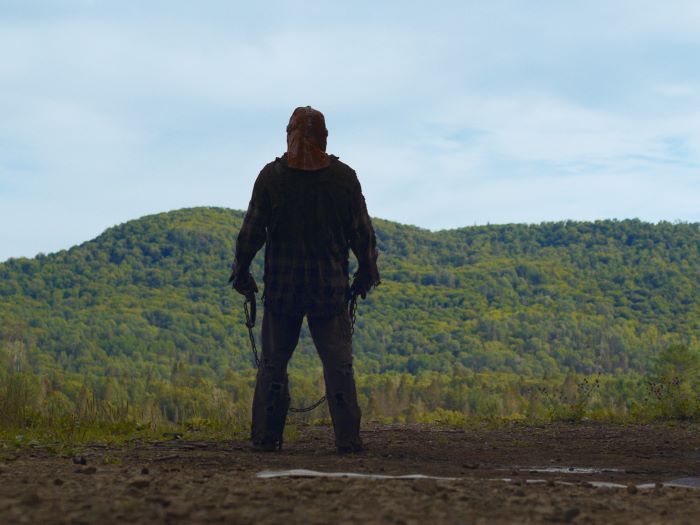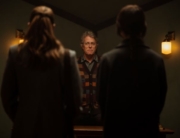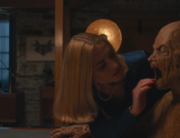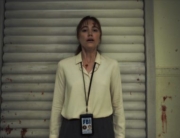Deep in the woods, in the middle of a collapsed building, a small gold locket is left hanging on a stick. We don’t see it at first. We only hear the offscreen college students debating whether or not to take it, and even their voices are not especially loud. The camera is fixed on a broken window, the sounds of the forest are omnipresent.
Then the camera pans and we see the locket, which one offscreen college kid takes. They leave and, for a moment, all is quiet, except for the forest. Then something begins to stir underground and, slowly, a figure emerges. He is massive, dirty, and takes deliberate, heavy steps through the woods. His name, we later learn, is Johnny, the long dead victim of a hateful crime, and the locket (a gift from his parents) was the one thing keeping his soul at rest. He will kill everyone in his path to get it back.
Director Chris Nash brings a fresh approach to this familiar slasher story. Not only does it follow the monster, as opposed to his victims, but it does so with special attention to the overpowering presence of nature, to unlikely details in the surrounding environment, with—almost—no shots of Johnny’s face. Nash has cited Terrence Malick and Gus Van Sant as influences (as well as Friday the 13th), and, to an extent, it shows. The soundscape is beautifully rendered and maintained, with all the forest sounds underscoring the action and making the people depicted seem less significant than nature itself.
The framing often achieves the same effect, in such a way that an unlikely detail emerges, making an image seem organic and unusual. There are also long sequences in which the camera simply follows Johnny as he marches through the woods, revealing nothing of him but the back of his head and his massive frame. As such, his presence is somewhat matter of fact, and the viewer might develop a weird empathy with him, in spite of the brutal acts he commits. We do, after all, know something of his story.
For the most part I would say that In a Violent Nature, while inventively filmed, is not especially inventive. Substance does not quite match style here, and this comes across most clearly whenever characters deign to speak. Thankfully, this does not happen often, but when it does, it comes across as though Scream were not played for laughs. In clumsy attempts to sound authentic, these characters speak both in clichés and barely concealed spewing of exposition. Hearing them do so at all is enough to completely undermine Nash’s strengths.
You could forgive Nash here, and argue that his real aim is just to scare your pants off. I wouldn’t say it succeeds there either. While the killings are gruesome, their gratuitousness reminds the viewer more of a kid who just got his hands on some special effects rather than anything genuinely horrifying. More importantly, they fail to frighten because his victims seem so unreal. Though it is far from routine to follow the slasher the way we follow Johnny through the woods, it’s also pretty easy to get used to, and much of it is pretty monotonous once we realize what he’s up to. Nash’s approach, in short, does not fully transform his story into something strange and new.
There are, however, two scenes which are definite exceptions: the finale, which I will not give away other than to say that it contains much stronger dialogue than anywhere else in the film. It achieves a kind of ambiguity we rarely see in routine horror films.
The other is when Johnny’s face becomes visible. Johnny, though he was a child when he was killed, is momentarily distracted from his murderous mission when a little toy car falls off the keychain of one of his soon-to-be victims. He sits down by a tree, running the car along his hand, and letting his hideous face smile with unabashed delight. In the opposite corner of the frame, the other character wanders, searching for his fallen keys, unaware that Johnny is so close.
This moment, with its poignant juxtaposition, is given weight partially because it contrasts so much of what we see elsewhere. It is hard not to wonder what this movie would have been like if Nash had brought the same level of precision and intelligence to the rest of it.







Leave A Comment